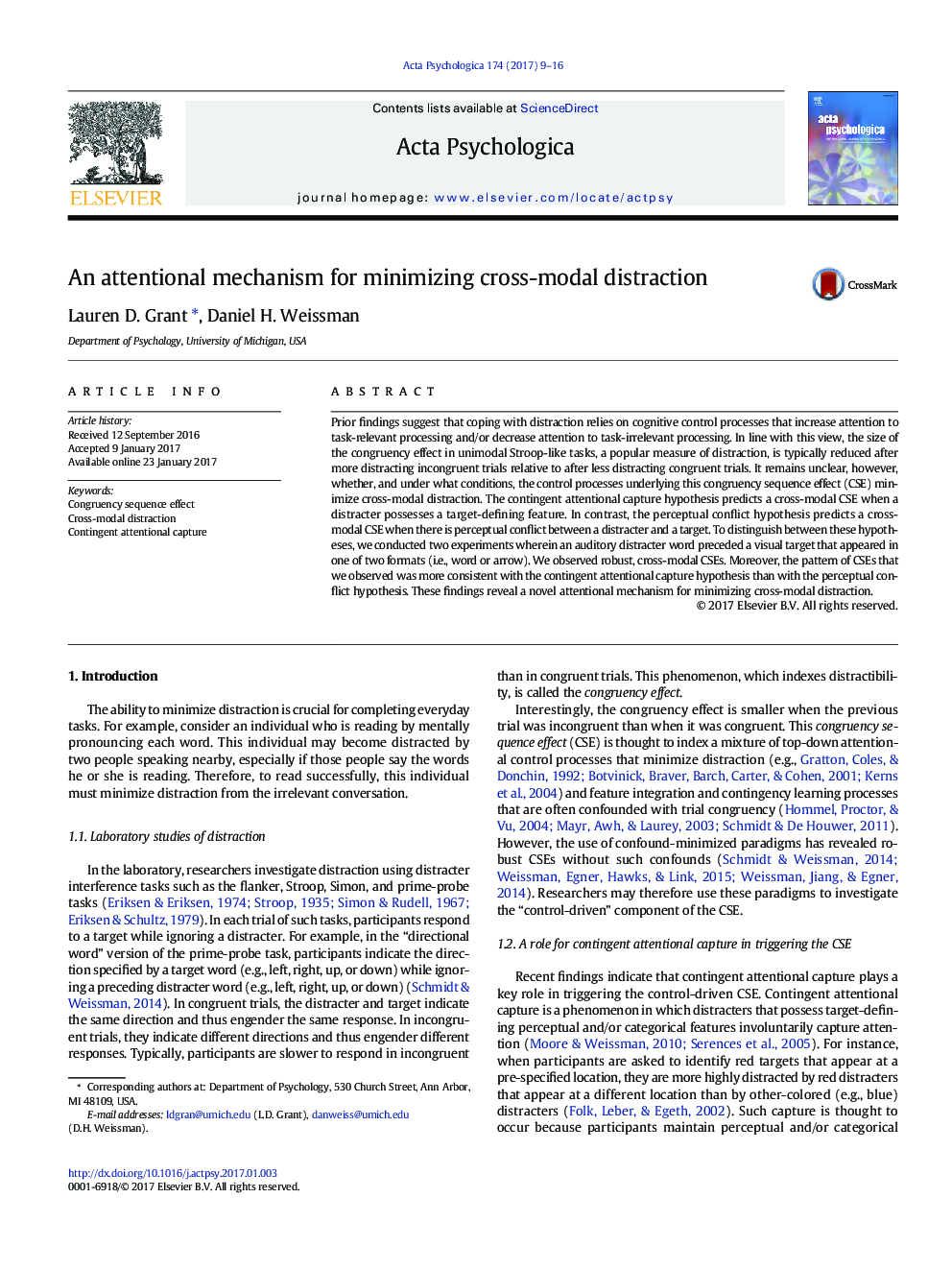| Article ID | Journal | Published Year | Pages | File Type |
|---|---|---|---|---|
| 5040235 | Acta Psychologica | 2017 | 8 Pages |
â¢We investigated an attentional mechanism for minimizing cross-modal distraction.â¢To achieve this goal, we exploited the congruency sequence effect (CSE).â¢Auditory distracter words triggered CSEs when they named visual target words.â¢In contrast, auditory distracter words did not trigger CSEs via perceptual conflict.â¢These findings suggest that attentional capture triggers cross-modal CSEs.
Prior findings suggest that coping with distraction relies on cognitive control processes that increase attention to task-relevant processing and/or decrease attention to task-irrelevant processing. In line with this view, the size of the congruency effect in unimodal Stroop-like tasks, a popular measure of distraction, is typically reduced after more distracting incongruent trials relative to after less distracting congruent trials. It remains unclear, however, whether, and under what conditions, the control processes underlying this congruency sequence effect (CSE) minimize cross-modal distraction. The contingent attentional capture hypothesis predicts a cross-modal CSE when a distracter possesses a target-defining feature. In contrast, the perceptual conflict hypothesis predicts a cross-modal CSE when there is perceptual conflict between a distracter and a target. To distinguish between these hypotheses, we conducted two experiments wherein an auditory distracter word preceded a visual target that appeared in one of two formats (i.e., word or arrow). We observed robust, cross-modal CSEs. Moreover, the pattern of CSEs that we observed was more consistent with the contingent attentional capture hypothesis than with the perceptual conflict hypothesis. These findings reveal a novel attentional mechanism for minimizing cross-modal distraction.
